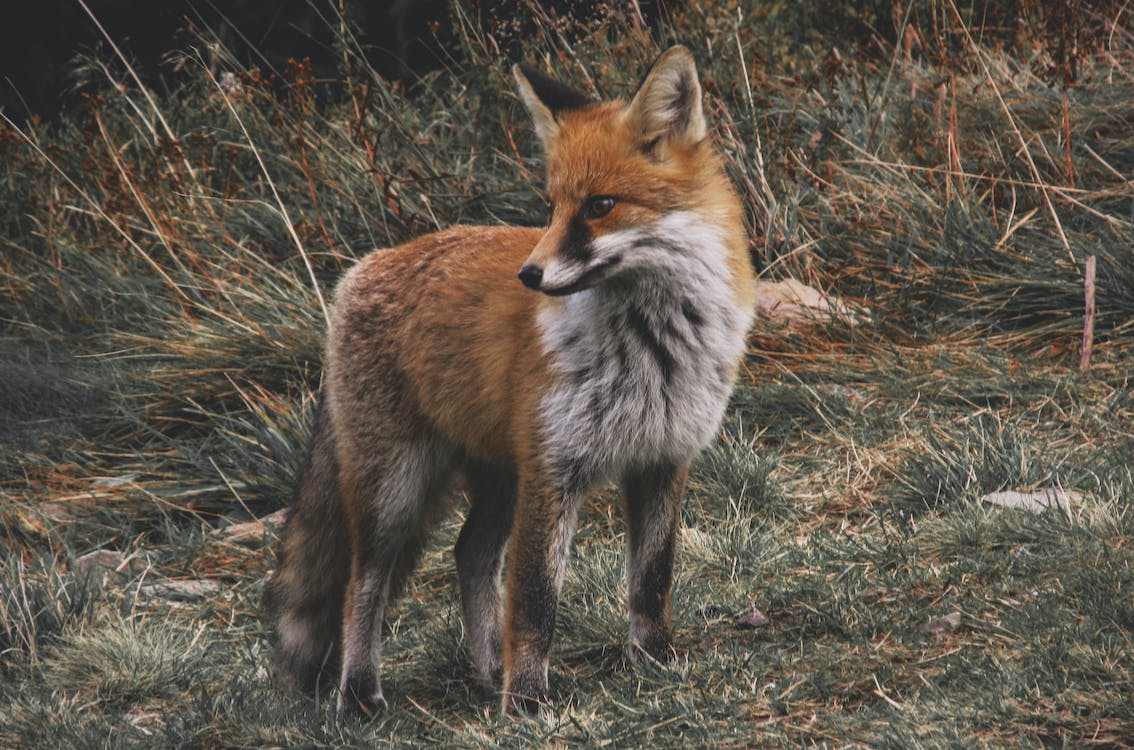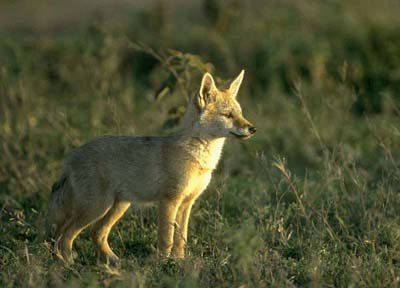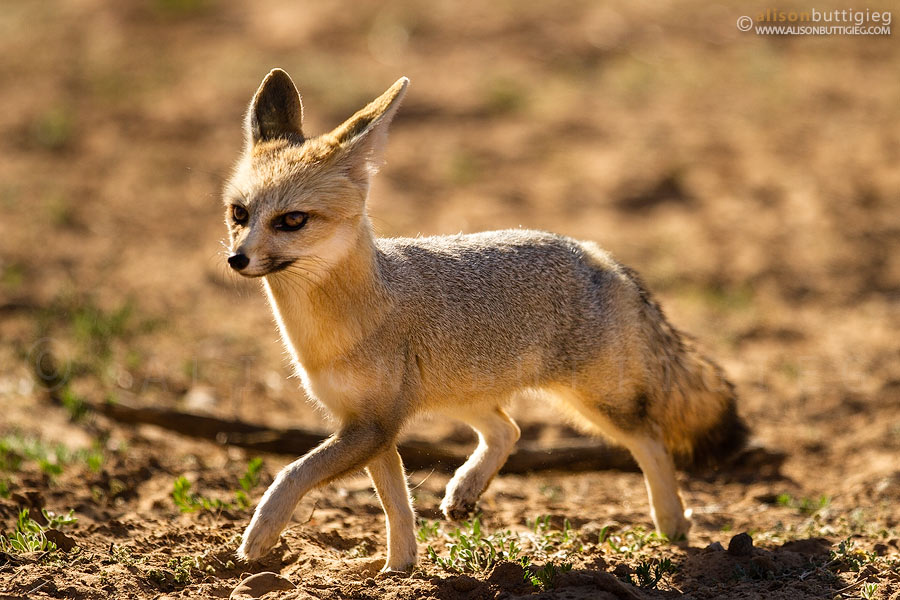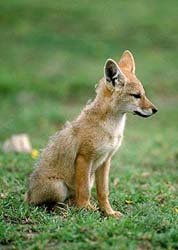It is a small snuggly and elegant fox, with conspicuous big ears, often regarded as the South African counterpart of the Fennec Fox. It is the only true fox in its range in southern Africa, thriving in semi-arid regions, savannas, and grassy plains while finding refuge in burrows, holes, and dense thickets.
Read further to know more about the Cape Fox.
What is a Cape Fox?
Cape Fox (Vulpes chama), also called as the silver-backed fox or the cama fox, is a small fox endemic to southern Africa, belonging to the family Canidae. This omnivorous canid feeds on smaller mammals, reptiles, insects, carrion, fruits, and berries, whichever is available, foraging during the early morning and the early evening.
Its seven levels of classification are as follows:
Kingdom: Animalia
Phylum: Chordata
Class: Mammalia
Order: Carnivora
Family: Canidae
Genus: Vulpes
Species: V. chama
Cape Fox Physical Description
Cape Foxes are smaller, slender foxes, growing from 17.5 to 24 inches or 45 to 61 centimeters, weighing 3 to 6.5 kilograms or 6.6 o 14.3 pounds, with a tail measuring 11.5 to 15.7 inches or 30 to 40 centimeters. Females are relatively smaller than the males.
Their underfur is characterized by thick wavy hair, covered by a heavy coat of guard hairs. They are silver-gray-colored on the back, while the fur on the face, chest, limbs, and neck are paler, ranging from tawny-brown to whitish tone. Dark patches occur on their thigh’s back, triangular marks between the eyes and nose, and a thin dark band at the tip of the muzzle.
Cape Foxes have large tawny ears, with white hard edgings, making them look like the South African version of the Fennec Fox. Meanwhile, their tail is long, fuzzy, with a light-brownish to whitish base and a black tip.
Where can they be spotted?
Cape Foxes are spread throughout Namibia, Botswana, and South Africa. In South Africa, it can be seen in the Eastern Cape, KwaZulu-Natal, Free State, North West, and Northern Cape provinces. They thrive in semi-arid regions, savannas, and grassy plains, preferring open countryside habitats, with sparse thickets and scrubs, while avoiding forests.
Interesting Facts You Should Know About the Cape Fox
Cape Foxes are omnivores, which means their diet comprises both animals and plants. They feed on insects, spiders, smaller animals, such as birds, rabbits, hare, rodents, and scavenge carrions. These foxes will also consume berries and fruits whenever available. As nocturnal canids, they are most active and forage early morning and evening.
They shelter during the day in burrows, holes, hollows, and thickets. As active diggers, they can excavate hollows themselves but may take burrows abandoned by other creatures. While they have a pair, they are often seen and forage singly.
Cape Foxes are not territorial animals but will mark their range with their scent. They are typically silent, communicating only using subtle whines, chirps, and calls but may produce loud barks when threatened or alarmed.
These foxes are monogamous and form life-long bonds with their partners. They breed throughout the year but usually give birth to offsprings from October to January. The female Cape Fox usually gives birth to 3 to 6 cubs. The newly-born pups are typically helpless, weighing only about 50 to 100 grams. With that, the male hunts and bring food to the female as she tends to their pups.
Cubs are weaned at 6 to 8 weeks old, with both sexes sharing the responsibility in feeding and protecting them. Juveniles will go out of the burrows and forage with their mum at four months old and become independent at a month later. They may remain in their homes until new pups are conceived, in which their parents have to force them out of their range.
Capes Foxes usually die from rabies, canine distemper, animal traps, or from being hit by vehicles on the road. They are also often hunted because they are mistaken for jackals, who are blamed for losses in livestock. Occasionally, they also fall prey to predators, such as hawks, owls, caracals, hyenas, leopards, and lions. Nevertheless, their number appears to be stable, and they are currently classified as Least Concern (LC) under the IUCN Red List of Threatened Species.
WILDLIFE PARKS AND RESERVES WHERE THIS SPECIES IS FOUND:




